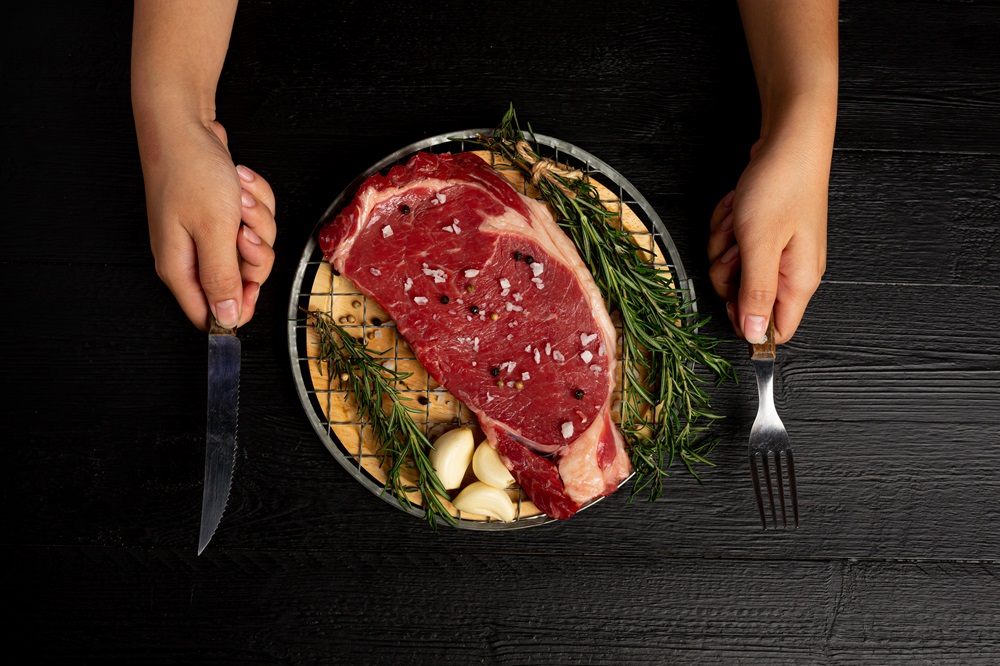Kwaśniewski Diet – recipes, rules, meal plan

The Kwaśniewski diet, also known as the optimal diet, is an eating model based on high-fat animal products, limiting protein and carbohydrate intake. It is a restrictive weight-loss diet that, despite many drawbacks, enjoys considerable interest among consumers. What are the rules of the Kwaśniewski diet? What are the recipes for the optimal diet? Which foods are allowed on Dr. Kwaśniewski’s plan?
Table of contents
What is the Kwaśniewski diet?
The Kwaśniewski diet, called the optimal diet by its supporters, is a low-carbohydrate, high-fat eating plan. It was developed in 1966 by Polish physician Jan Kwaśniewski and became popular in the 1990s.
Initially used as a supportive therapy for epilepsy, the Kwaśniewski diet later gained recognition as a weight-loss method. According to its supporters, this eating model may lead to rapid weight reduction. However, scientists and experts warn that this high-fat plan could have potentially negative effects on human health.
Rules of the Kwaśniewski diet
The Kwaśniewski diet, considered a slimming plan, may be helpful for some diet-related conditions. It reduces protein intake and limits carbohydrates even more. In this high-fat diet, up to 80% of daily calories can come from fatty foods. The standard guideline in the Kwaśniewski plan is that for every 1 g of protein, you can eat 2.5-3.5 g of fat and 0.3-0.5 g of carbohydrates.
According to Dr. Kwaśniewski, followers of the optimal diet should eat three filling meals per day, maintaining the above macronutrient ratios. At the same time, daily vegetable intake should not exceed 300 g.
What to eat on the optimal diet?
The Kwaśniewski optimal diet is based on high-fat animal products. The menu may include foods such as:
- fatty meats and cold cuts,
- organ meats,
- fatty fish,
- full-fat milk and dairy products – cheese, cream, butter,
- other animal fats, such as lard, bacon, tallow,
- eggs, especially egg yolks,
- fatty sauces,
- vegetable oils.
The optimal diet also limits vegetables to 300 g per day and allows only small amounts of berries such as raspberries, blueberries, blackberries, or wild strawberries.
Grain products, dry legumes, and most fruits and vegetables – especially starchy vegetables – are excluded. The plan also forbids sweets, dried fruits, sugary drinks, salty snacks, and artificial sweeteners.
Who is the optimal diet for?
Originally, the Kwaśniewski diet was recommended for people with epilepsy. It may also be suggested for individuals with obesity, metabolic syndrome, or type 2 diabetes.
However, this high-fat model may be dangerous for people with kidney disease, cardiovascular problems, or liver failure. It is not recommended for children or the elderly. People with type 1 diabetes or eating disorders should also avoid it.
Kwaśniewski diet - sample meal plan
Many wonder what a weekly optimal diet menu looks like. Since it is based on high-fat animal products, eliminates grains, and significantly restricts vegetables and fruits, the menu - with its small list of allowed foods - tends to be limited and lacking variety. Here are some sample recipes:
Breakfast - Scrambled eggs with bacon and bell pepper
Ingredients: three eggs, two slices of bacon, one tablespoon clarified butter, half a red bell pepper, one teaspoon chopped chives.
Preparation: Dice the bacon. Wash and cube the pepper. Heat clarified butter in a pan. Add bacon and fry. Add pepper and stir. Crack in the eggs and add chives. Cook until the eggs set.
Lunch - Salmon with spinach
Ingredients: 150 g salmon fillet, two tablespoons clarified butter, 100 g spinach, 80 ml heavy cream, one garlic clove, salt, pepper.
Preparation: Wash and dry the fish, season with salt and pepper. Heat one tablespoon butter in a pan and fry the salmon. Wash and dry spinach. On another pan, heat one tablespoon butter and add minced garlic. Stir in spinach, add cream, salt, and pepper, and bring to a boil. Serve salmon topped with spinach sauce.
Dinner - Chicken breast stewed in tomato sauce
Ingredients: 150 g chicken breast, two tomatoes, salt, pepper, one teaspoon clarified butter, water, two tablespoons sour cream (18%).
Preparation: Wash and dry the meat, cut into pieces, season. Heat butter in a pan, sear the chicken. Wash, blanch, and peel the tomatoes, then add to the pan and mix with the meat. Add a bit of water to form a tomato sauce, then stir in the cream.
Kwaśniewski diet - opinions and effects
At the start, the Kwaśniewski diet may cause significant weight loss, attracting those seeking fast results. In the first week, one can lose 2-3 kg. However, this rapid loss is mostly due to reduced carbohydrate intake, which lowers muscle glycogen and causes water loss – not necessarily fat reduction.
The diet’s high-fat, low-carb nature can induce ketosis, where the body uses fat for energy. This may promote weight loss, reduce hunger, and increase satiety. Another potential benefit is improved blood sugar control.
Still, it is not a long-term, healthy way of eating. The Polish Academy of Sciences Committee on Therapy deems it harmful. The strict rules and the very limited list of allowed foods, especially the low vegetable and fruit intake, can lead to multiple nutrient deficiencies.
Relying heavily on high-fat animal products can also raise cholesterol levels, increasing the risk of cardiovascular diseases such as atherosclerosis.
Thus, while some supporters claim it not only helps shed extra weight but also improves mood and well-being, the Kwaśniewski diet is not recommended by nutrition experts for weight loss. Polish dietitians even consider it one of the worst eating models. A healthy, balanced diet with a proper calorie deficit, combined with regular physical activity, is considered the correct approach to losing weight.

